

| Home |
| News |
| Biography |
| Images |
| Sketchbook |
| Music |
| Words |
| Links |
(Mostly Musical) Biography
Chris Squire and Geddy Lee were my inspirations for picking up the bass. Usually I play a Rickenbacker 4001, but I also use a fretless Fender Jazz, acoustic bass, a selection of electric and acoustic guitars, bouzouki and mandolin. I've started learning the piano too, but that'll be a long slog!
My musical history is hardly star-studded and earth-shaking. But it makes good therapy for my shattered ego to recount what little of interest there is. If you were part of the Birmingham music scene of the early 90s, some of this may even be interesting!
I was born in Birmingham, but my family moved to Shirley, a quiet suburb of Solihull when I was two. With a reclusive, protected childhood, I had almost nothing to do with music of any type apart from watching Top of the Pops every week, and listening to chart singles (Mum would often pop into a record shop on her way home from work and bring us back a single). I did enjoy the Glam Rock stuff: Slade, Sweet, T Rex, Mud, even (shudder) The Osmonds! But music (even watching TOTP) disappeared from my life for a few years in the mid 70s. I can't remember why now, although it was probably because I spent all my spare time building Airfix kits.
Then the tap was turned on again. Somehow I got hooked on ELO in a major way whilst
at secondary school. This was when they were at their peak - circa "Out
Of The Blue". At the time, I didn't realise that what I liked best
about their music were the distant echoes of the great Prog-Rock bands
of the seventies. So I jogged along, blissful in my ignorance, until I
started at 6th Form College and discovered all sorts of interesting diversions.
. .
Well, teenagers being what they are, maybe I'd better draw a veil over most of those interesting diversions,
but the important thing was that a cool new set of friends introduced me to
a veritable motherlode of great Rock music. In one rollercoaster year
I discovered Yes, Rush, Led Zeppelin, Pink Floyd, King Crimson, Deep Purple,
AC/DC, Hawkwind, Triumph, Black Sabbath, Blue Oyster Cult, Mike Oldfield,
Sky and many others (although I didn't get into other Prog-rock greats
sch as Genesis, Jethro Tull or ELP until some years later). I also started going
to concerts for the first time. This was about the time when the NWOBHM
(New Wave Of British Heavy Metal) hit, and I lapped up all of that too:
Iron Maiden, Saxon, Samson, Quartz and the rest. If it had distorted guitars,
it was for me! I went the whole hog, bought a denim jacket and loads of
glitter patches, and became a complete "nugget". (I've still
got what's left of the jacket - and it still fits!)
Like many people, I started playing music at college - just jamming with mates in the music room. As a complete non-musician amongst friends who were already accomplished players, I resorted to just plucking the 4 low strings of an acoustic guitar. I joked that I was "the bass player". This made me wonder what a bass guitar actually sounded like, so I started listening for the bassists' parts on records, and trying to emulate what they were doing. Luckily, my parents picked up on this enthusiasm, and I was given my first bass - a short-scale Aria-manufactured Epiphone - for my 18th birthday. I was given my second bass - the mighty Rickenbacker - for my 21st. (I was offered the choice: the Rick, or a party. No choice really!) I must thank my Dad for buying me this lovely instrument, especially as he hated rock music! That shows how much he must have loved me, even though he didn't usually show it. By then I was heavily into Yes and Rush, and reckoned that the Rick was the best sounding - and coolest looking - bass in the world. That's an opinion I still hold to this day.
I joined a band with my college friends. We learned some covers to perform, but never got as far as doing a show. It was a lot of fun though! About this time I met two exceptional musicians: Mark "Happy" Wadsworth (on bass) and Pete "Jungle" Williams (on guitar). I would visit their homes, listen to them play, sometimes jam with them, and they taught me so much about how to play music - and how to listen to music too. Happy in particular took me under his wing and showed me how to play the bass. We listened to our favourite records and tried to work out the bass parts from them.
Back in the real world
My brother is the naturally-talented musician in the family, so I never saw it as a career for myself. I studied electronic engineering, and after college I settled into a strangely niche day-job, designing and building electronic street-lamp controllers. This was a lot more fun than it sounds, as I got to play with lots of interesting kit, and be creative with circuit and package designs. (I even put in a patent application for one circuit.) Later I moved into the computing field, working for a while as a software tester at Apricot Computers (the best job I've ever had!) and then doing IT support roles.
Cold Flame
On the music front, although I was still massively into rock and had my guitars, I somehow managed to avoid joining a group until 1987, when I was invited to join a young Deep Purple-influenced group of ever-changing name and line-up. This eventually stabilised as the Metal trio "Cold Flame". (OK, I now know there is at least one other group using that name, but at the time we were ignorant of any duplicates - no Internet to check these things out!)
As well as the obligatory Deep Purple covers, we had a nice little
set of original material. Guitarist/singer Kev Reihill was the main creative
force, but I started to cut my own song-writing teeth too. We had an amazing
drummer who was a guitarist first and foremost - the multi-talented
Tariq Quattri.
We managed just one gig, at the Alum Rock pub in Birmingham (about which, I could tell you a lot of stories!) before financial
pressures (i.e. we were skint!) forced an end to things.
Kev later formed a tribute band called "Pete Durple". (Great name!)
Dusk
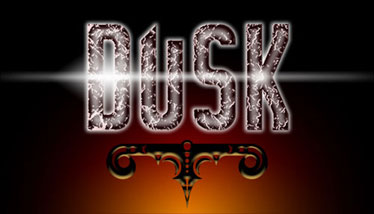
At this time, we were sharing a lock-up rehearsal room at "Robannas" studios in Birmingham with some friends, who played together under the name "Dusk". Real musos all, and seemingly destined for greatness, they were my role models and heroes. Happy was their bassist, so he had introduced me to the band shortly before the move to Robannas. Happy left Dusk at about this time, and I offered to fill in the bass role, playing in both bands for a while. Soon they accepted me as a full member. Joining their select ranks felt like a real achievement.This was a great time for me: I would leave work in the afternoon and drive straight over to Robannas to spend the evening rehearsing, only going home to sleep.
Unfortunately, though, it didn't work out. Dusk managed to hide in a studio for most of its short life: a victim of chronic illness, perfectionism and emotional turmoil. Not really fitting in, I eventually got the boot without even playing a gig. Anyone lucky enough to have experienced other incarnations of Dusk playing live will understand why this was such a crushing blow to me. The group fizzled out soon after.
The Earthmovers
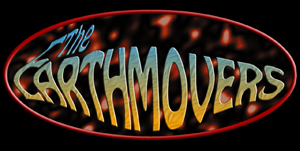
Disillusioned, I dropped out of music for a couple of years. Then a friend (and fellow ex-Dusk-er) Matt Phipps-Hunt recommended me to
a group he knew, formed by some young Lucas engineers who shared digs in Sparkhill,
Birmingham. Initially influenced by The Cult, they had a high-octane set
- penned mostly by the awesome team of singer Alan Liddle and guitarist
Pete Jones.
I liked the feel-good atmosphere of the group and joined without hesitation
- contributing two songs of my own. I think it was Alan who chose the
name "The Earthmovers". A daft name, but fun - just like the
group.
Soon we found ourselves in need of a new drummer.
I suggested my old Dusk colleague Dave "Doug" Sutheran. Then Happy asked if he could get involved too, switching from bass to rhythm guitar. Lo, it came to pass that a seriously tight rhythm section was created!
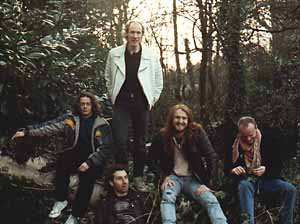
This line-up cut a 4-song demo tape, "Enough", which included the original twin-guitar version of my own song "The Gulf Between Us".
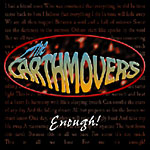
Due to daytime career changes, we lost Alan
soon after our debut gig (at The Hibernian, Selly Park, Birmingham), but the group's style matured and diversified
under the guidance of new singer and beat poet Paul Davies - bringing
some genuinely new and unique sounds to the tired old pub-rock circuit.
The Earthmovers were fairly successful - considering the stifling apathy
that then gripped the Birmingham scene. Paul injected an element of theatre into
the proceedings, and we discovered a great way to bring my bouzouki into
the set. Try to imagine a deep, throaty, repetitive Tony Iommi-style guitar
riff with a quirky bouzouki ditty over the top, then puncuate it with
some of Paul's most potently powerful lyrics, and you might get an inkling
of the jaw-dropping impact that "The Ghost & Serpent Syzygy"
made when first performed. Weird . . .
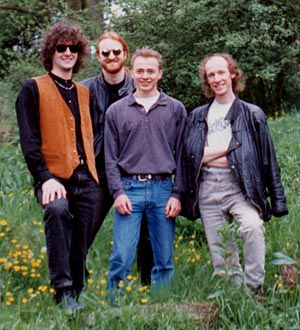
A little aside - one that will become important much later in the story: just after Paul joined, Doug and Happy formed a pick-up band to play a charity concert at a British Legion club in Olton. They invited me to take part. Also in that band were Gary Sheriden (lead vocals, guitar), Gavin Saunders (guitar) and Alex Theay (keyboards). This was the first time I'd met these guys, and after we did the gig we went our separate ways again (with Doug and Happy leaving The Earthmovers after our first gig with Paul). I had no idea at the time just how much our musical destinies would become entwined, years later. . .
The Earthmovers (now down to a four-piece, with Simon Atkins taking over on the drums) soon had a semi-residency at The Fallow & Firkin in Harborne (a nice pub, which has now burnt down!). It became a frequent feature of the show to invite Kevin Reihill out of the audience to play guest guitar on "The Gulf. . ." and other songs.
We recorded some more demo tapes, both live at the Fallow and in Paul's makeshift home studio. While the recording technique wasn't as polished as on the "Enough" demo, the material shone through. With some digital cleaning-up, these demos were transferred to CD and re-released in May 2003 under their original titles of "Jammin' For Quakes" and "Firkin Live & Fallow".
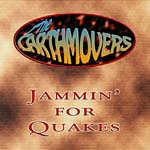
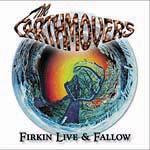
The group lasted several years (and more line-up changes) before reaching
a natural conclusion in 1997.
I still insist that the group is not dead, merely sleeping. I keep in
touch with some of the other members, and we've played occasional gigs,
sometimes with Rob Brunt (from Randolph Flagg - see below) guesting on guitar. We had an Earthmovers reunion in October 2007 - with original guitarist Pete back in the band.
Check out www.theearthmovers.co.uk
for more info!
Randolph Flagg
At about the time we were winding up The Earthmovers, Simon
(who had left some months before to try his hand as a session muso) asked
me to help out temporarily on bass in a new Country Rock group he'd joined,
formed by guitarist Rob Brunt.
The original musical style was definitely not my "cup of tea",
being a collection of Country and Blues covers - music I'd previously had no real interest in. I used to get confused
by the sheer number of songs that had almost identical chords and rhythms
- especially as the bass part was limited to the traditional "dum-de-dum"
plodding along on roots and 5ths. To make it worse, I was determined to
learn something new, so to start with I played everything on my fretless Fender Jazz, which
had been gathering dust until then. Despite all this, I gave it a go, and found that I could
last the distance, when other - technically superior - bassists had proved
unreliable. (That's me: boring, but reliable.)
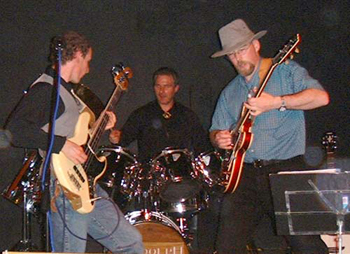
The stay became a permanent one, as the group metamorphosised into Randolph Flagg, and left the musty but safe old Country genre for greener and more interesting pastures. The new sound was much closer to the style I like to play: up-front, in-yer-face bass, with more emotion and plenty of scope for interesting breaks and fills. I even started to bring in the ol' Rick on some of the tunes. Rob was a fan of the strange sound of my bouzouki (tuned like a mando, rather than the traditional way), and was keen to use it on more new tunes.
I had a hand in the design of the band's CD covers, although the cowskull picture was created by 2nd drummer Gordon's Dad, who was a professional signwriter. The band logo developed from branded-on-wood to glowing science fiction eerieness over the course of the run of albums!
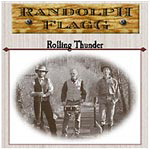
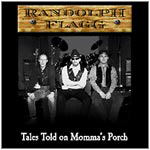
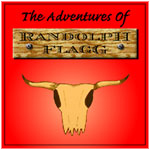
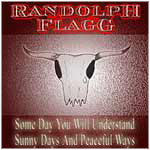
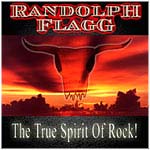
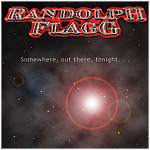
Dusk revisited
After Randolph Flagg went on ice (it was difficult to find and keep drummers), I teamed up again with Dave "Doug" Sutheran to reform his 80's group "Dusk". Our first project was to consolidate our surviving recordings from the first iteration of this band. After pooling our resources, we had enough material to produce two CDs of the best tracks under the title "From The Dawn". The Dusk logo used on the covers was designed by Doug, with artistic treatments by myself.
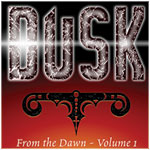
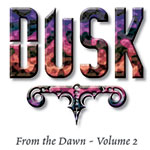
In 2006 we got together with Gary, Gavin and Alex to form a "21st Century" incarnation of the band that would take the music forward. As by now we knew (thanks to the Internet) that there were several thousand other bands out there all called "Dusk", we modified the name to "The Dusk Project".
1912
Soon after forming however, we realised that we had something totally different on our hands. All the new members were strong sogwriters in their own right, and lots of new music was being put forward or emerging from group jams. It was all so much more interesting than simply resuscitating the vintage Dusk material. It seemed right to remove the reference to Dusk, as it was no longer relevant. So we changed the name to "1912". (This is a number which has a special meaning to the band - but you'll have to come along to a gig and ask us about that!)
I'm happy to report that 1912 is still going strong, seventeen years later!
We've produced four albums to date, all released on Lee Potts's Monty Maggot record label:
Waiting For No One - October 2011
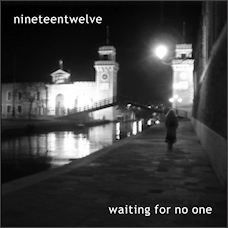
Elegy - September 2013

New World Order (with The Hybrid Project) - February 2016
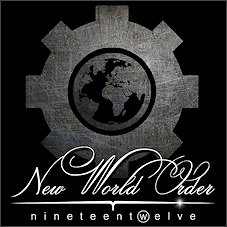
No Place Like Home - September 2022
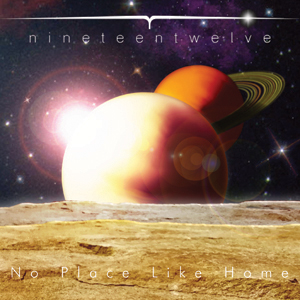
Recording is already proceeding apace for a fifth album, with a likely release early in 2024. Check out www.nineteentwelve.com for latest news on this band.
Omenopus
Soon after we formed 1912, Doug introduced me to his old bandmate from the 70s, Lee Potts, and we hit it off right from the start. So since 2009, I've also been a part of Lee's constantly evolving "Omenopus" project, featuring Bridget Wishart, Sheriden Starr and an ever-changing roster of guest musicians, known as "Omenants". For a change, I mostly played lead guitar ton the initial recordings, with bass, mando and bouzouki (and even some piano!) thrown in.
In 2010, we released a (free) four-track EP "Portents" and our debut album "Time Flies".
Two more albums followed: double-album "The Plague"/"Scars" in 2012 and sci-fi concept album "The Archives" (based on a story and music created by Sheriden) in 2014.
In 2016, Lee collaborated with 1912 on an album called "The Hybrid Project" which appeared as a bonus 2nd disc on 1912's 3rd album, "New World Order". This was a concept album, telling the story of a survivor from a dying alien race, sent to Earth. The music was built around studio and rehearsal recordings that 1912 had made over the years, heavily modified and "re-imagined" by Lee, with other guest artists joining in (notably Andrea Rushton, formerly of Dusk).
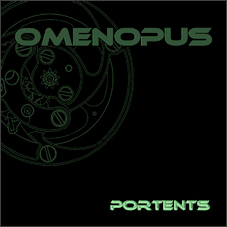
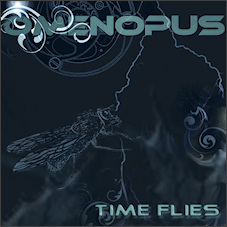
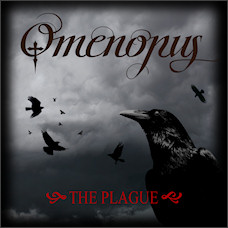
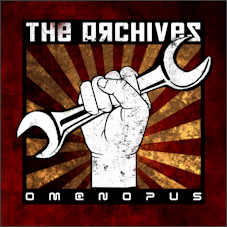
Lee has produced two CD compilation albums under the title "Allies & Clansmen" (the first released in April 2011) which feature contributions from Omenopus, 1912 and a host of other artists - including some well-known names. These were originally available from the Omenopus site for free, but have since become sought-after collectors' items, changing hands for vast sums of money!
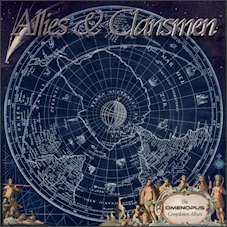
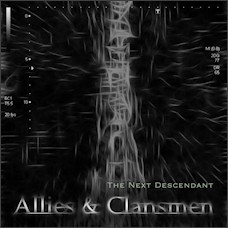
Since 2004 I've lived in the shadow of the Lickey Hills, near Birmingham, England, with artist and designer Julie Hatton (go to www.theimagegallery.co.uk for examples of her craft) with our son showing up in 2013.
Sadly, Julie died in May 2023, so this year has been an emotional and challenging one for me.
Writing and Art
After leaving full-time employment in 2010, I'm now self-employed, doing IT support, training and documentation work. I'm winding down the IT side of the business now, as I'm just not that au fait with the modern methods and equipment. Instead I'm concentrating on the documentation side. So if you need any documents proofread, edited, or fixed (we all know how easy it is to break a document in MS Word!), then drop me a line!
Over the years, I've always had an interest in art. This has led me to contribute to the artwork of some of the records that I've been involved with. Recently I had the pleasure of working on the cover art and layout design of 1912's latest album "No Place Like Home", collaborating with artist Tanweer Dar. This also involved creating a new logo for the band (based on a design I'd been tinkering with for several years), Both cover art and logo were greeted with much enthusiasm by the band members. So I'm now looking at the possibility of doing more of this sort of thing. Does anyone need a logo or cover art? Give me a call!

My ambition is two-fold: to make a mark on the UK Rock scene; and find a decent set of 1970s Bass Pedals. It may not be too late for either!
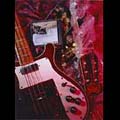
www.johnpierpoint.com
Site design by John Pierpoint
Older photos and design assist by Julie Hatton